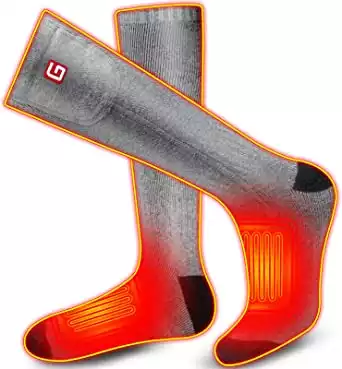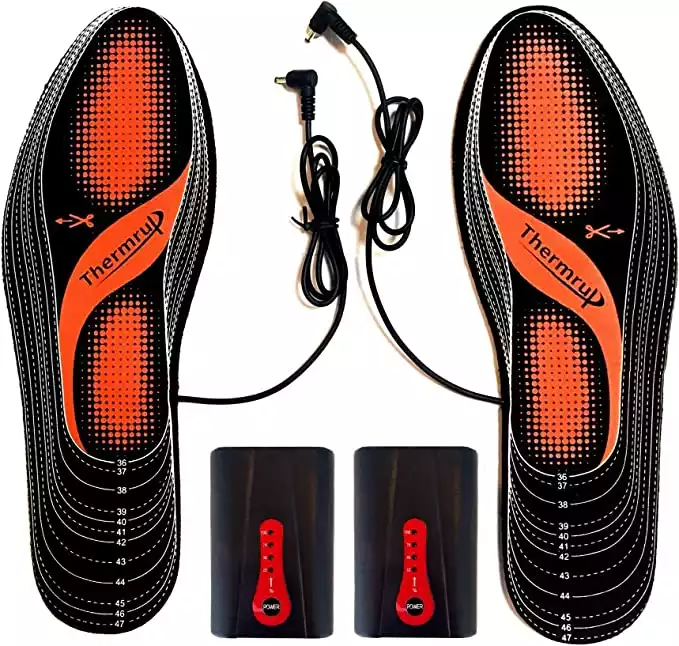FACT: Keeping your feet warm during the winter months isn’t easy.
When the mercury drops, you need a way to ensure that your toes stay toasty warm throughout all your outdoor activities. Thankfully, there’s a solution to all your foot-warming needs: heated insoles and heated socks.
Heated insoles and socks can both be excellent additions to any outdoor clothing layering system for cold-weather adventures. But, deciding between heated socks and insoles isn’t always easy because there are many similarities between these 2 toe warming methods.
To settle this debate once and for all, we’ve created this ultimate heated insoles vs heated socks head-to-head match up.
In this article, we’ll walk you through the advantages and disadvantages of both of these heated clothing options so you can say bye-bye to cold feet in the outdoors for good.
Heated Socks vs Heated Insoles: The Basics
First things first, let’s talk a bit about what heated socks and insoles actually are before we dive into a detailed discussion about the features of each method.
Heated Socks
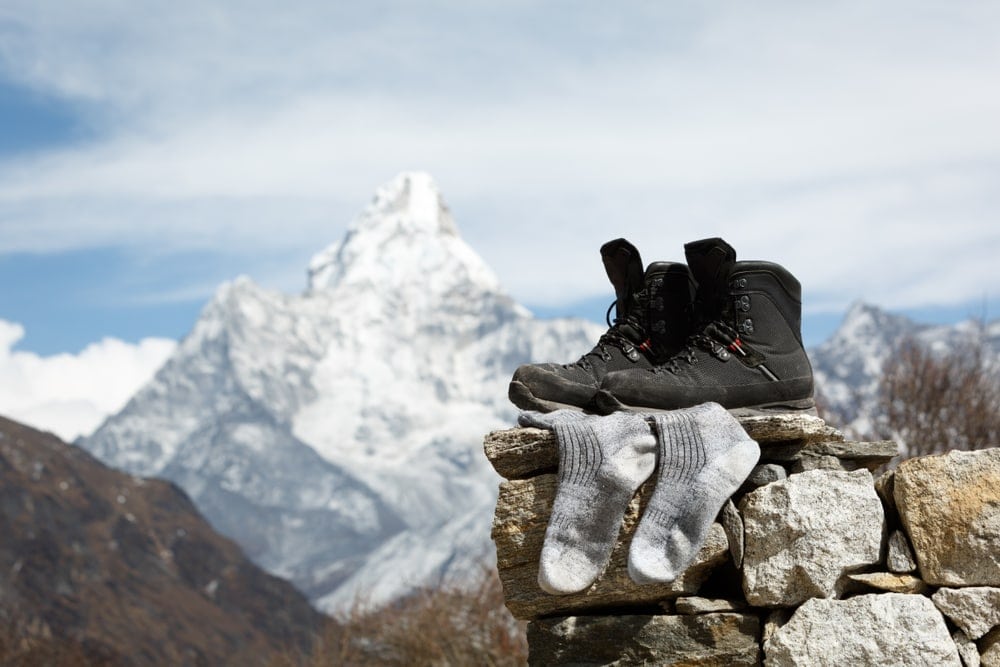
As the name suggests, heated socks are, well, socks that have a built-in foot warming system for use during the colder months of the year. Heated socks, like the Rabbitroom Heated Socks and the Begleri Heated Socks, are more or less your standard set of warm winter socks, but they have a battery pack that allows you to adjust the heating temperature to suit your needs.
Pros:
- Full-foot warmth
- Can be used in tight-fitting footwear
- Usually more affordable than insoles
- Can be worn anywhere – even in bed!
- Generally more affordable
Cons:
- Socks often fall down or bunch over time
- Temperature controls are located on the sock
- Socks need to be hand-washed
- Made of soft, breathable spandex material
- Lasts to 3-6 hours, depending on the level of heat used
- Rechargeable for 7 hours with easy to carry charger
Heated Insoles
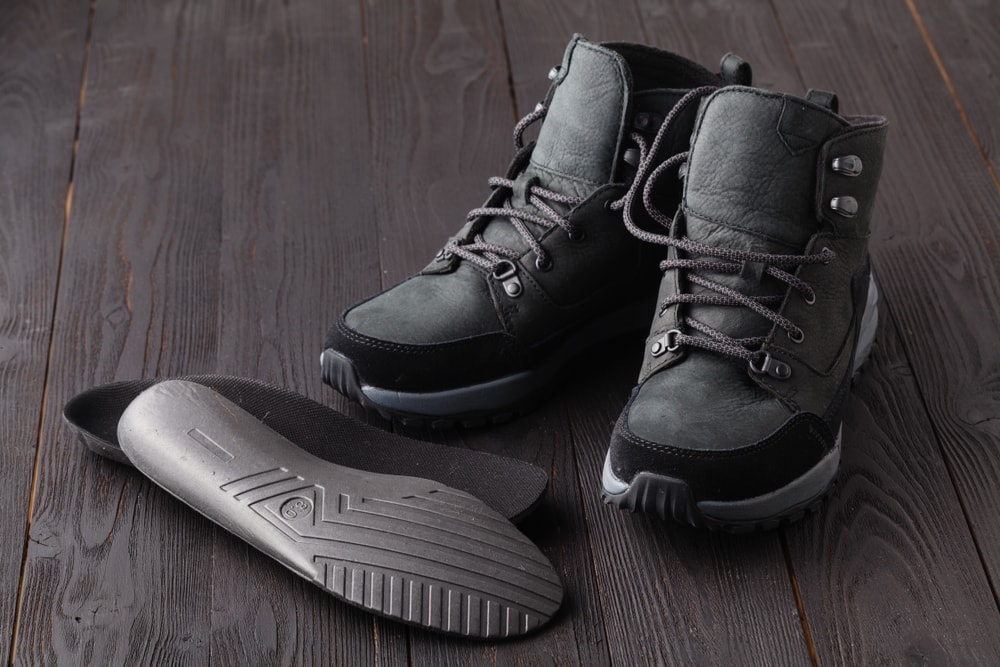
Heated insoles (a.k.a. heated shoe inserts) are aftermarket insoles that you can insert into your hiking boots for support and comfortability during your outdoor activities in the winter.
Shaped just like a normal pair of insoles, heated models, such as the Aroma Season Rechargeable Heated Insoles and the Thermrup Electric Heated Insoles, come with a remote control that allows you to set the temperature of your boots for enhanced foot comfort in cold climates.
Pros:
- Temperature adjustments with a remote control
- Don’t need to be washed after each trip
- Battery pack is built into the insole for extra convenience
- Warms the entire underside of your feet
Cons:
- Can make your shoes feel too tight
- Fairly pricey
- Features a far-infrared rubber heating element
- Includes a bundle full of kit
- With temperature controller
Heated Insoles vs Heated Socks: What You Need To Know

Now that you have a solid understanding of what heated insoles and socks are, let’s dive right into our head-to-head match up.
Warmth
If you’re shopping for heated clothing, chances are pretty darn high that keeping your feet warm is of the utmost importance for your winter camping trips and other outdoor activities.
When it comes to heated socks and insoles, though, both options generally provide a wide range of different temperature settings for you to choose from. That way, you can customize the temperature of your feet to suit your personal needs.
However, it’s important to note that heated insoles only warm your feet from the bottom while socks provide all-around foot and toe warmth. Therefore, you’ll often find that heated socks feel warmer, even if both options can pump out the same amount of heat.
Winner: Heated socks because they provide full foot warmth while heated insoles only provide warmth on the underside of the foot, like with toe warmers.
Fit & Comfort
Hiking, camping, skiing, and other outdoor sports require that we spend a lot of time on our feet. As a result, it’s imperative that your feet fit well in your boots if you want to avoid blisters and other foot injury woes.
When you’re shopping for heated socks or insoles, it’s important to take into account how much space each option takes up inside your shoes. For folks who wear tightly-fitting boots, heated insoles, which take up more space than your normal insole, might make your shoes feel a little too snug for comfort.
Meanwhile, heated socks are about the same thickness as your standard pair of winter hiking socks, so you may not really notice any change in the fit of your boot. Do keep in mind, though, that some heated socks have heating elements on the top of your toes, which might affect the fit of your boots.
Winner: Heated socks because they tend to be the same thickness as an average pair of winter socks, which means a more comfortable fit in your boots as you hike.
Temperature Controls
With the vast majority of heated garments, like socks and insoles, you can adjust the temperature settings with just the push of a button.
However, while most heated insoles come with a remote control for temperature adjustments, most socks have control settings that are mounted to the battery pack at the top cuff of the sock. This means that you need to bend down to adjust the temperature of your socks, which can be tricky to do if you’re wearing multiple layers of clothing on your lower body.
Winner: Heated insoles because they almost always come with a remote control for seamless temperature adjustments.
Washability
Washing outdoor gear can be a challenge sometimes, and heated insoles and socks are no exception.
The good news is that heated insoles generally don’t need to be washed after each trip. If your feet were a bit sweaty during your hike, you can simply remove the insoles from your boots and set them aside to dry.
Alternatively, washing heated socks is a bit more of a process. To wash these socks, you’ll usually need to remove the battery pack, wash the socks by hand, and then hang them up to dry. This whole process can take about a day to complete, so you may need multiple pairs of heated socks for frequent outdoor adventures.
Winner: Heated insoles because they don’t need to be hand washed on a regular basis.
Power Source
Heated socks and insoles require power sources to be able to warm up your feet in the cold. Both types of foot warmers use battery packs to power their heating elements and, for the most part, you can expect about 6 to 10 hours of warmth from either socks or insoles.
That being said, it’s worth mentioning that the weight of the battery pack of heated socks (which is usually located at the top cuff) can often cause your socks to slide down and bunch up as you hike. Depending on how long you’re outside for, this could be quite an annoying issue.
Meanwhile, most heated insoles, like those from ThermaCell, have batteries that are built into the soles themselves, which means minimal hassle on the trail.
Winner: Heated insoles because the battery pack is usually located inside the insole for maximum convenience as you hike.
Convenience & Functionality
Perhaps the biggest difference between heated insoles and heated socks is in their levels of convenience and functionality.
In particular, heated insoles are designed solely for use in an outdoor environment as they only work when you’re wearing shoes. On the other hand, you can wear heated socks all day long, even if you’re not wandering around outside.
This might not seem like a big deal, but it does have a major impact on how and where you can use each item. For example, while you can wear heated socks in bed at night for extra warmth, your heated insoles aren’t going to do much for you if you’re tucked away in your sleeping bag for the night.
Winner: Heated socks because you can wear them inside and outside without the need for shoes.
Price & Affordability
Although you can find both heated insoles and socks for sale at a wide range of different price points, you’ll usually find that socks are the cheaper option.
In fact, heated socks can be about half the price of their insole counterparts, so they’re generally the better option for campers on a budget.
Winner: Heated socks because, on average, they tend to be more affordable than insoles.
The Verdict
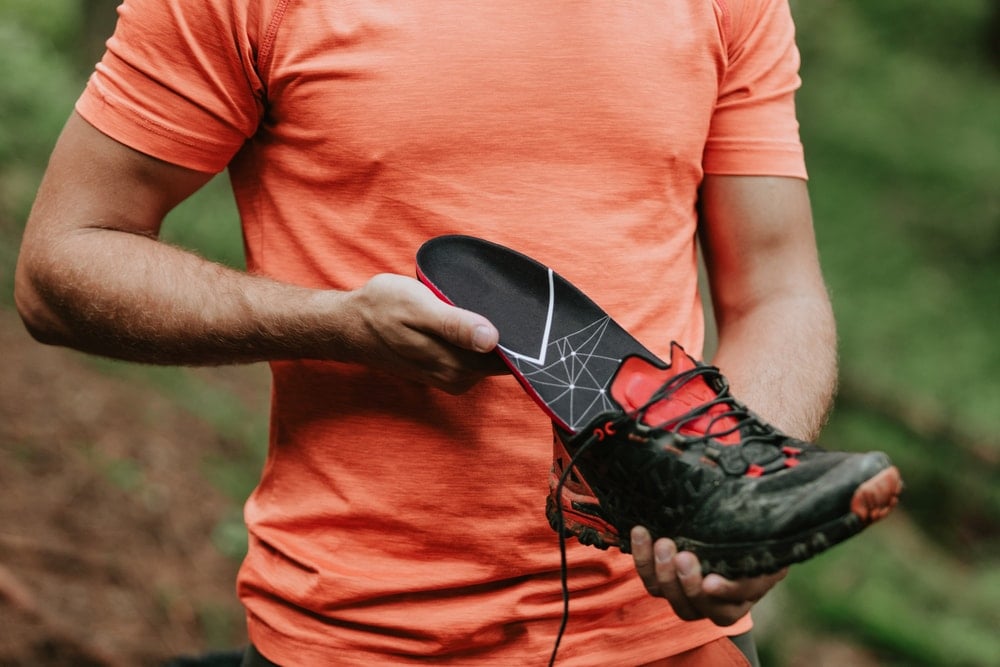
Deciding between heated insoles and socks can seem daunting at first, but when you break down each option’s features, it’s easier to see which model is best for your needs.
Use heated insoles if:
- You prefer the convenience of remote controlled temperature settings
- You’d rather not have to wash your gear after each use
- You like simplicity and ease of use in your gear
Meanwhile, opt for heated socks if:
- You prioritize affordability
- You have tightly-fitting footwear
- You’d like warm feet, even if you’re not wearing shoes
- You want full-foot warmth while you hike
At the end of the day, whether you prefer heated socks or insoles, there are plenty of great foot warming options for you to choose from.
For folks who want to try out heated insoles, the Aroma Season Rechargeable Heated Insoles and the Thermrup Electric Heated Insoles are both popular choices. Alternatively, the Rabbitroom Heated Socks and the Begleri Heated Socks are both well worth checking out if you’re interested in heated socks.
Regardless of which method you choose, you now have all the information you need to keep your feet as warm as can be while you’re on the trail. See you in the mountains!
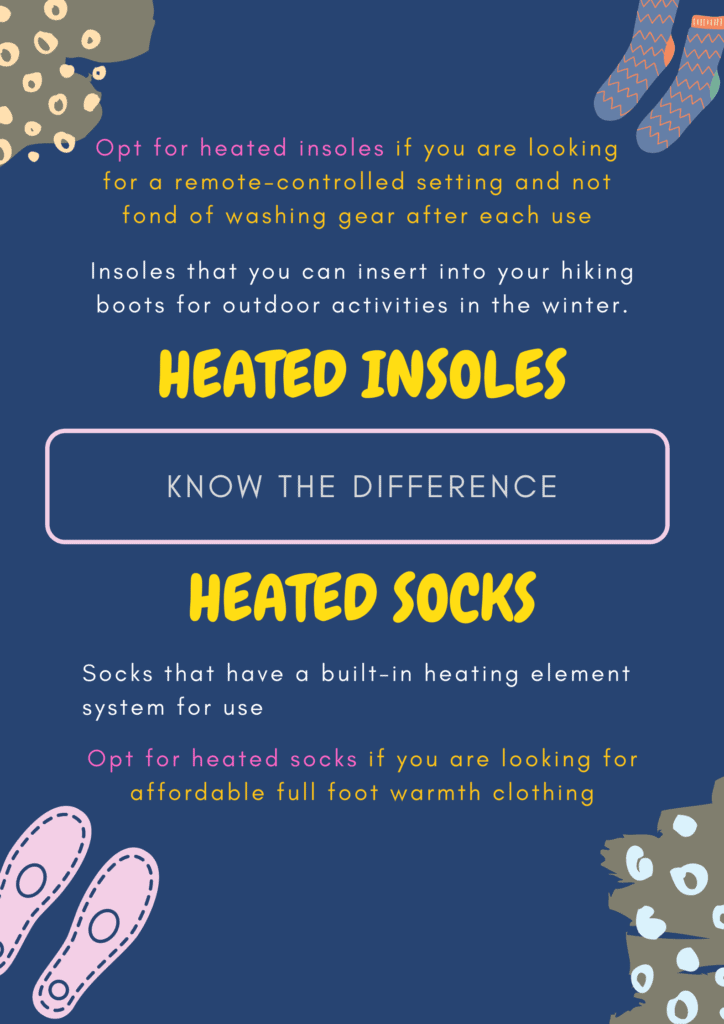
FAQs
Are Heated Socks Safe?
The majority of heated socks are safe for regular use. However, an important consideration with any item of heated clothing is the risk of getting the battery pack wet in the rain or snow. Therefore, caution is needed when recreating in wet environments.
Moreover, some heated socks have had issues in the past with overheating. As a result, it’s important that you always follow the manufacturer’s recommendations when using your socks to prevent any accidental injuries that result from keeping the temperature setting too high.
Are Heated Socks Worth It?
If you find that you often suffer from cold feet while you’re hiking, a pair of heated socks might make a big difference in your comfort levels on short day trips. Since heated socks can provide warmth throughout the top and bottom of your foot, they’re an ideal choice for anyone that wants to avoid frosty toes in the winter months.
How Do You Wash Heated Socks?
Most heated socks need to be hand-washed in warm water, but you should always check the manufacturer’s recommendations before starting the washing process. Generally, you’ll want to remove the socks’ battery pack, hand wash in warm water, and then hang the socks to prevent any damage to their sensitive internal wiring.
Can Diabetics Wear Heated Socks?
It’s generally best if diabetics avoid wearing heated socks. That’s because diabetes can limit your ability to sense heat and cold in your feet due to poor circulation in your extremities. As a result, it can be difficult to monitor whether your heated socks are too hot, which could lead to injuries down the line.
Therefore, if you have diabetes, it’s usually better to wear warm socks that are made specifically for diabetics, but you should always consult your physician if you have any concerns.



